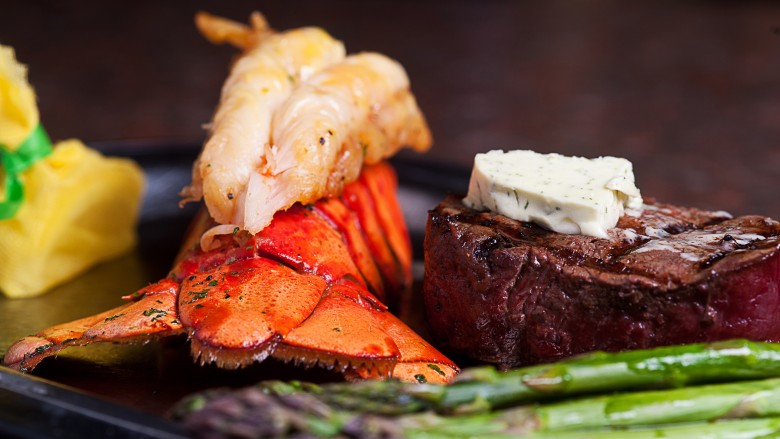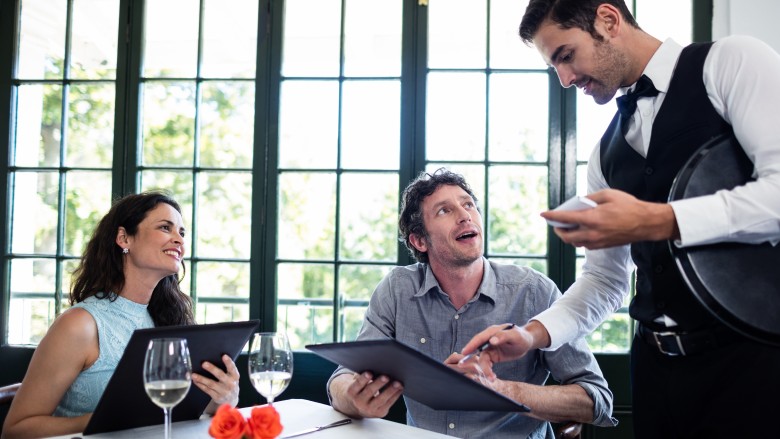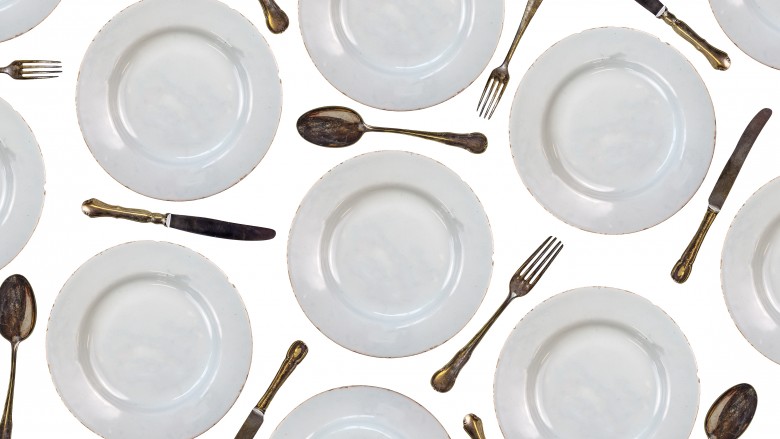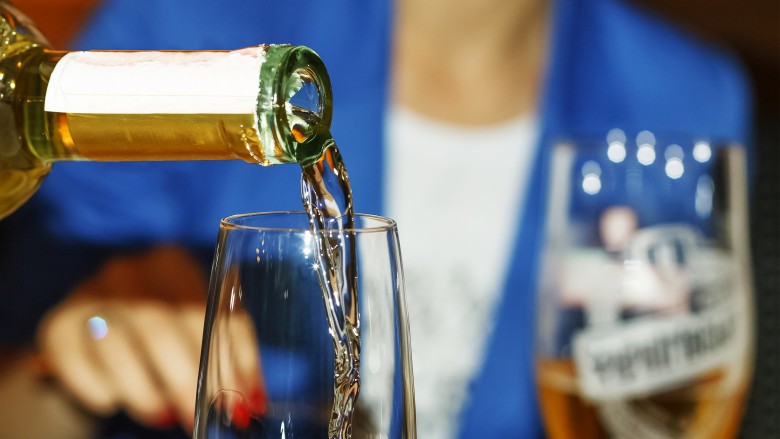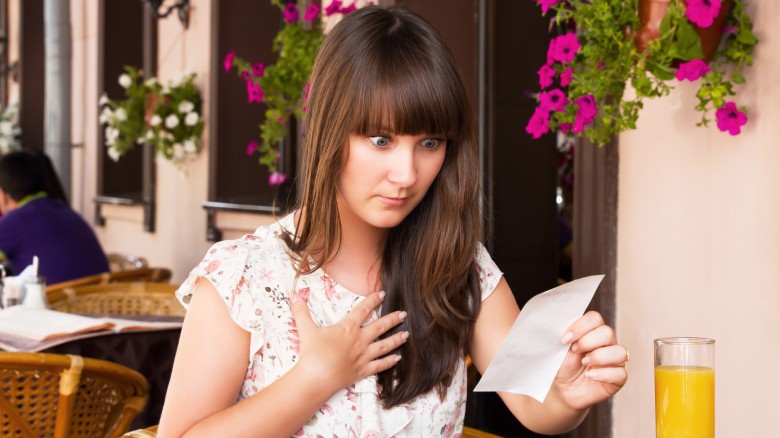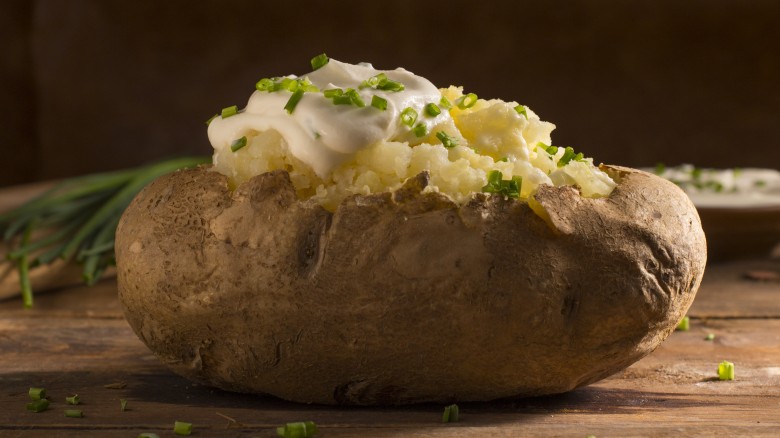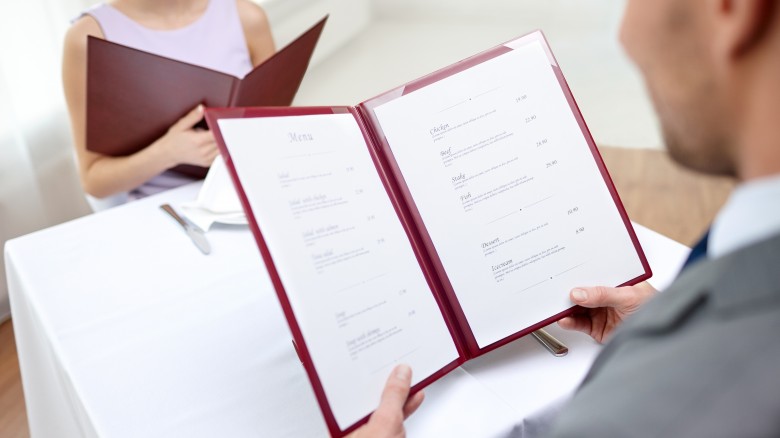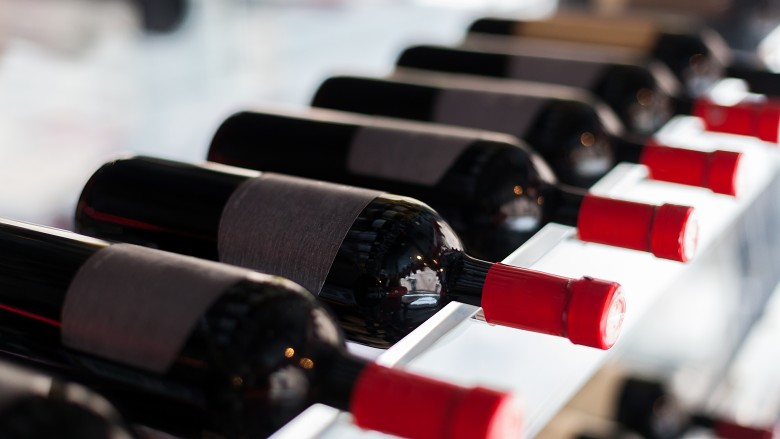How Restaurants Trick You Into Spending More Money
With nearly 15 years of experience working in restaurants, I learned a few tricks of the trade that were designed to help me and my restaurant reach our ultimate goal — to give you the greatest experience ever so you'd want to come back and to drive up that check as much as possible in the process. I'm not talking about anything duplicitous. I'm referring to honest-to-goodness strategies of salesmanship that bolster the restaurant's bottom line and the amount of tip money I walked with at the end of my shift. And it goes well beyond your experience with your server. From the design of the menu and the size of your portions to the choices on the wine list, your visit to a restaurant has been carefully orchestrated in a way to make you feel good about parting with your hard-earned dollars. It may even have you coming back next week for a chance to do it again.
Upselling
Aaah ... the timeless art of the upsell. When you're ordering your meal — from your apertif to your dessert — we have ways to upsell your choices, adding a few dollars here and there to your bill until it's reached a tidy amount, with the idea that our tip will add up as well. If you're ordering a vodka drink, I would say (as I smile and nod my head) "Grey Goose with that?" If you choose a steak and baked potato, the smile and nod again, along with "would you like to add a lobster tail to that? Baked potato fully loaded?" You get the idea. It's about making the experience better for the guests while slowly increasing the bill. But that's enough about that. Who's ready for a slice of homemade cheesecake?
Server incentives
It always surprises me that more people don't know about this one because anyone who's worked in the restaurant industry is familiar with it. Owners and management will incentivize the servers to super-sell a particular item. It could be a drink special, a fish dish that features a fish that's about to go bad, what have you. The server who sells the most of the item during that shift can win a prize, which may just be cold hard cash. (Anyone remember the story about the Hooters waitress who was tricked into thinking she won a Toyota, but it was actually a toy Yoda? Don't worry, she successfully sued the restaurant.) If a server is a little bit too enthusiastic about the chicken and artichoke special or a new microbrew, it might be the incentive item of the night.
Smaller portions
You may not have even noticed it, but according to The Guardian, the portions at your favorite restaurant may be shrinking. The deception lies in the size of the plates you are being served on, which it reports can easily be switched from 12 inches to 11 inches with very little chance of observation by the customer. One switch that customers will notice is the rise of "small plate" menus, even at large chain restaurants. With both tricks, the resulting smaller portions may leave hungry diners more susceptible to ordering multiple plates or adding on desserts. Savvy servers will likely even recommend to you a minimum number of plates to share for your group. Cha-ching.
Refilling your glass
If you've ordered a bottle of wine or premium water for the table, you may notice how excellent the service seems to be when it comes to constantly making sure you have a full glass. Yes, this does mean that your server is a seasoned pro, but maybe not quite for the reason you think. The server's goal is to have that bottle finished by the time you're barely halfway done with your entree. What are you gonna do, finish out the rest of the meal with nothing to sip on? Of course not. Nine times out of ten, you'll go for that second bottle, or at least another glass to add on the end. The same rule works with cocktails and beers. I won't wait for you to drain your glass to ask if you want a refill; I'll ask when I notice your glass is about a quarter full so I can have a fresh drink in front of you by the time you're polishing off that last sip.
Surcharges
The most prevalent restaurant surcharges to make newspaper headlines have been the minimum wage surcharges that proprietors have tacked on to restaurant bills in cities that have raised the minimum wages for restaurant workers. These were, not surprisingly, met with a mix of resistance and favor, with restaurant owners finding themselves embroiled in a political and legal debate they likely never thought they'd face. But minimum wage surcharges aren't the only surcharges to watch for. Restaurants in most states are legally allowed to charge you up to 4 percent extra on your bill if you're paying with a credit card, as long as they make the policy clear on the menu or your server tells you.
Sides aren't included
If you're accustomed to dining at upscale steakhouses, you're probably used to this policy. Steakhouses rarely, if ever, accompany their prime cuts of meat with a side dish more than a twig of parsley. Along with your $50 ribeye, you'll be expected to cough up another $10 for a baked potato or $14 for a serving of creamed spinach. This practice could easily trickle over to other styles of restaurants, so you may want to ask specifically what's included with your entree. I myself have noticed that more and more entrees are coming with just one side dish, rather than the starch and veggie I would expect. I definitely like to enjoy my meal with both, so I'm the perfect example of a patron who can be enticed into adding a salad or side of fries.
Engineered menus
There's an entire industry dedicated to engineering restaurant menus in a way that prompts you to spend the most bucks on your dining experience. In 2014, Business Insider reported on research from the Cornell University School of Hotel Administration that gives us a real insider look to the psychological trickery at play on restaurant menus. Cornell found that some of the most common tricks were the absence of dollar signs in pricing, overly flowery adjectives and language used to describe dishes, and the use of ethnic food terms to make items seem more authentic. Restaurant menus may even highlight or bold the font of an item they wish to push. Super pricey dishes are sometimes decoy items, placed on the menu to make the rest of the prices seem more reasonable. Even the eye movement patterns of people reading menus has been analyzed so menu engineers can guide your eyes to the dishes with the highest profit margins.
Desserts
I'm one of those people who can easily pass the dessert options by — more of a salty appetizers kind of gal. But I was tickled to learn that even I have fallen prey to some of the dessert-selling chicanery that occurs in many restaurants. Restaurant News advised restaurant owners to instruct staff to just leave the dessert menu on the table without asking customers if they want to see it first. I will admit, my answer to a server is always no when asked, but when the dessert menu is dropped in arm's reach or standing on the side of the table the entire meal, I can't help but pick it up to take a peek. I'm also more intrigued when a restaurant actually makes its desserts in house.
Another appealing dessert option that's harder to say no to? Mini desserts. I first saw these at our local P.F. Chang's — little shot-sized desserts that are smaller versions of the most popular dessert options. That tiny size makes you feel much better about the calories you're adding to your meal and the dollars you're adding to your check.
The second most expensive wine
We already know that alcohol is the highest markup in a restaurant, so it should be no surprise to you that the wine you buy at a restaurant costs you far more than you'd pay for the same bottle at the liquor store. In fact, one glass of wine might cost you more than the restaurant paid for the entire bottle. What you may not know, however, is that the restaurant understands the psychology of those ordering the wine and knows that people will rarely order the cheapest bottle on a wine list for fear of seeming cheap. Therefore, the second cheapest bottle on the menu, the one many customers opt for, is quite often the worst value. British restaurant critic Jay Rayner told The Telegraph, "I do not hold to being intimidated by anything in this life and if a wine list irritates you, just buy the cheapest on the list." Even Food & Wine agrees that the cheapest bottle could be a good deal, especially in restaurants with carefully curated lists.

